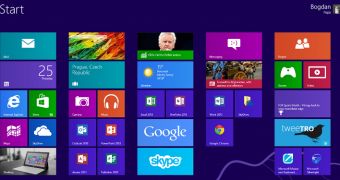Now that Microsoft has officially launched Windows 8, researchers are anxiously waiting to see just how well the newly implemented security systems can cope with the ever present threats. Experts from security firm Trend Micro have analyzed the latest protection mechanisms to highlight their ups and downs.
First of all, there’s Windows Defender. The new version of the product doesn’t only focus on spyware, as the one that came with Windows 7. Instead, Defender combines both antivirus and spyware capabilities.
On the other hand, Windows Defender is not active in Windows 8 right from the get-go. Customers can install any security product they desire.
However, if they don’t install anything within a two-week period, Windows Defender is automatically activated in order to provide at least a basic level of security.
The second security mechanism deployed in Windows 8 is the Unified Extensible Firmware Interface, also known as UEFI, a system which not only speeds up the boot-up process, but also offers an extra layer of security.
“The use of UEFI appears to be a good choice. However, it has its caveat. Due to legacy issues and no governing body over UEFI standard, Windows 8 systems that ship via OEM will only contain Microsoft’s keys, inadvertently preventing installation of alternative operating systems or at least making it very difficult to do so,” Threat Research Manager Jamz Yaneza said.
Finally, there’s the Early Launch Anti-Malware (ELAM) system which in combination with UEFI’s secure boot protects the computer against the installation of rootkits, particularly boot-level rootkits (bootkits).
Bootkits are highly dangerous because they allow cybercriminals to take control of a device “beyond the OS.” Unlike regular malware, bootkits are difficult to detect and also to remove.
“By pushing the UEFI envelope in Windows 8, the software vendor intends to veer away from this bootkit problem – and hopefully for good. This security comes at a cost of a learning curve and the alternative OS controversy mentioned, but it will be up to end users and companies to weigh-in if an extra layer piece of mind is worth the inconvenience,” Yaneza added.

 14 DAY TRIAL //
14 DAY TRIAL //